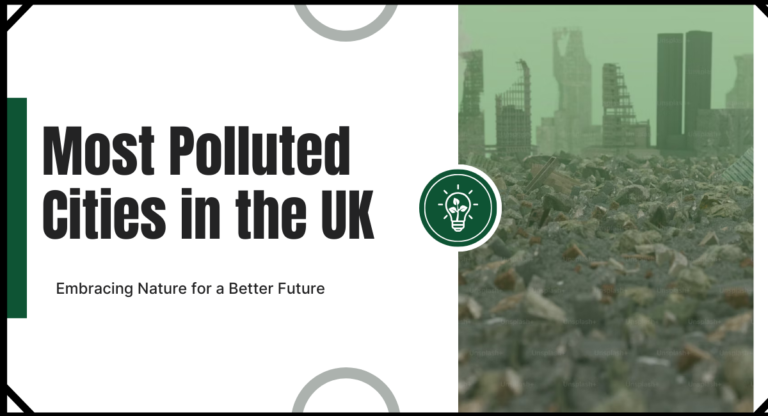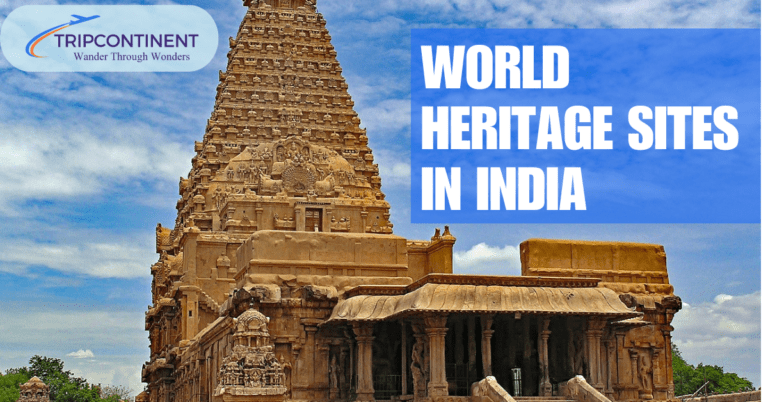Top 10 Hottest Places in the United States
The United States is known for its diverse landscapes and climates, ranging from snowy peaks to arid deserts. Among these varied environments are some of the hottest places in the country, where summer temperatures can soar to extreme levels.
Exploring the hottest places in the United States offers a glimpse into how communities adapt to extreme conditions and highlight the unique attractions and experiences that make each city special.
List of the Hottest Places in the United States
Following is the list of the hottest places in the United States.
- Phoenix
- Las Vegas
- Tucson, Arizona
- Riverside, California
- San Antonio, Texas
- Miami
- Houston
- Fresno, California
- Dallas
- Orlando, Florida
1. Phoenix
Phoenix, Arizona, holds the title of the hottest city in the United States, with its scorching summers and relentless sun. It is known for its extreme heat, particularly during the summer months when temperatures frequently soar above 100°F (38°C).
Phoenix experiences a desert climate characterized by hot summers, mild winters, and minimal rainfall. The city sees an average of 300 sunny days per year, making it a haven for sun-seekers but a challenge for those unaccustomed to intense heat. In July, the hottest month, average high temperatures often exceed 106°F (41°C), with record highs reaching up to 122°F (50°C).
Residents of Phoenix have developed numerous strategies to cope with the extreme heat. Air conditioning is a necessity, not a luxury, with most homes and businesses equipped to provide respite from the sweltering temperatures. Public spaces, including shopping malls and recreational centers, offer air-conditioned environments where people can escape the heat. Outdoor activities are typically scheduled for the early morning or late evening when temperatures are slightly cooler.
Phoenix’s residents have adapted to their environment in creative ways. Water parks and swimming pools are popular spots for cooling off, and the city hosts a variety of indoor entertainment options to keep people engaged without exposing them to the heat.
Despite the intense heat, Phoenix remains an attractive destination for many. Its desert landscape offers stunning sunsets, unique flora and fauna, and a vibrant cultural scene.
You might also like: Most Educated States in the US
2. Las Vegas
Las Vegas, Nevada, is not just famous for its glitzy casinos and vibrant nightlife but also for its scorching summer heat. Situated in the Mojave Desert, Las Vegas experiences some of the highest temperatures in the United States, making it one of the hottest places to visit.
Las Vegas has a desert climate characterized by sweltering summers, mild winters, and minimal rainfall. The summer months, particularly July and August, see average high temperatures hovering around 104°F (40°C), with occasional spikes reaching up to 117°F (47°C). The city’s arid climate ensures that humidity levels remain low, making the heat feel somewhat more bearable but still intense.
Residents and visitors in Las Vegas have developed various strategies to manage the extreme heat. Air conditioning is a must, with casinos, hotels, and shopping centers offering cool retreats from the blazing sun.
Las Vegas has adapted to its harsh climate with innovative solutions. Buildings are constructed with heat-reflective materials, and shaded walkways are common. The city also has a network of cooling stations and shelters to assist vulnerable populations, particularly during heatwaves.
Despite the extreme heat, Las Vegas remains a top destination for tourists. The city’s vibrant nightlife, world-class entertainment, and luxurious resorts draw millions of visitors each year.
3. Tucson, Arizona
Tucson, Arizona, is another city known for its intense summer heat. Located in the Sonoran Desert, Tucson offers a unique blend of desert landscapes, rich cultural heritage, and, of course, scorching temperatures.
Tucson experiences a desert climate characterized by sweltering summers, mild winters, and low humidity. During the summer months, particularly June through August, temperatures often exceed 100°F (38°C), with peak temperatures reaching around 110°F (43°C). The city averages over 350 sunny days per year, ensuring plenty of sunshine throughout the year.
Residents of Tucson have become adept at managing the extreme heat. Air conditioning is essential, and almost every home and business is equipped with it. Many public spaces, such as shopping malls, libraries, and recreational centers, offer air-conditioned environments where people can find relief from the sun.
Despite the heat, Tucson offers a wealth of attractions. The city is known for its vibrant arts scene, historic sites, and delicious Southwestern cuisine. The Arizona-Sonora Desert Museum, Saguaro National Park, and Sabino Canyon are popular destinations that showcase the natural beauty of the desert landscape.
Local government and community organizations often provide resources and information on staying safe during heatwaves. Cooling centers are available to help vulnerable populations, ensuring that everyone has access to a safe, cool environment.
4. Riverside, California
Riverside, California, located in the Inland Empire region, is known for its warm, sunny climate and picturesque landscapes. With a mix of urban amenities and natural beauty, Riverside experiences hot summers that make it one of the warmest cities in California.
Riverside enjoys a Mediterranean climate with hot, dry summers and mild, wet winters. During the summer months, especially from June to September, temperatures often reach the mid-90s°F (35°C), with occasional spikes above 100°F (38°C). Despite the heat, the city benefits from low humidity, which can make the high temperatures more tolerable.
Residents of Riverside have adapted well to the summer heat. Air conditioning is a standard feature in homes and businesses, providing much-needed relief during the hottest parts of the day.
The city’s numerous parks, such as Fairmount Park and Mount Rubidoux Park, provide shaded areas and water features that offer respite from the heat. Additionally, swimming pools and splash pads are popular destinations for families looking to cool down.
The Riverside Art Museum, Mission Inn Museum, and California Citrus State Historic Park showcase the city’s history and artistic heritage. For nature enthusiasts, the nearby Santa Ana River Trail offers scenic routes for hiking and biking.
The community in Riverside is proactive in dealing with the summer heat. The city often provides heat advisories and opens cooling centers to assist vulnerable populations, such as the elderly and those without access to air conditioning.
5. San Antonio, Texas
San Antonio, Texas, is renowned for its rich history, vibrant culture, and, notably, its hot summers. Situated in South-Central Texas, San Antonio experiences some of the highest temperatures in the state.
San Antonio has a humid subtropical climate, characterized by hot summers and mild winters. From June through September, temperatures frequently exceed 90°F (32°C) and often climb above 100°F (38°C). The combination of high temperatures and humidity can make the heat feel even more intense.
San Antonio’s residents have developed effective strategies to cope with the summer heat. Air conditioning is a necessity, and nearly all homes and businesses are equipped with it.
San Antonio is rich in cultural and historical attractions. The Alamo, a symbol of Texas independence, and the San Antonio Missions National Historical Park attract many visitors. The city also boasts a vibrant arts scene, with numerous galleries and theaters.
San Antonio’s community is well-prepared for the summer heat. The city issues heat advisories and operates cooling centers to help residents stay safe during extreme temperatures. Hydration is emphasized, and public water fountains and hydration stations are commonly found in parks and public areas.
Despite the hot summers, San Antonio remains a beloved destination for both residents and visitors. Its blend of historic charm, cultural vibrancy, and modern amenities makes it a unique and welcoming city.
Also see: Famous Food in the USA
6. Miami
Miami, Florida, is famous for its stunning beaches, vibrant nightlife, and tropical climate. Known for its hot and humid summers, Miami offers a unique blend of urban sophistication and natural beauty, making it one of the hottest places in the United States in more ways than one.
Miami enjoys a tropical monsoon climate, with hot and humid summers and warm winters. From June to September, temperatures typically range from the high 80s to the low 90s°F (31-34°C), with high humidity making it feel even hotter. Additionally, summer is the rainy season, bringing frequent afternoon thunderstorms and occasional tropical storms or hurricanes.
Miami’s residents and visitors have adapted to the hot, humid climate with several strategies. Air conditioning is essential, and nearly every building, from homes to businesses to public facilities, is equipped with it. Miami’s many shopping centers, like Bayside Marketplace and Dolphin Mall, offer air-conditioned escapes from the heat.
Beach culture is a significant part of Miami life, with locals and tourists flocking to South Beach, Miami Beach, and other coastal spots to cool off in the Atlantic Ocean. Water sports, such as swimming, surfing, and boating, are popular ways to beat the heat.
Miami is a cultural melting pot with a rich mix of Latin American, Caribbean, and American influences. The city’s vibrant arts scene includes the Wynwood Walls, an outdoor museum showcasing street art, and the Pérez Art Museum Miami. The historic Art Deco District in South Beach and Little Havana offer cultural and architectural delights.
Miami’s allure extends beyond its hot summers. The city’s dynamic nightlife, world-class dining, and diverse cultural experiences make it a top destination year-round.
7. Houston
Houston, Texas, is a bustling metropolis known for its diverse culture, vibrant economy, and, notably, its hot and humid summers. As the largest city in Texas, Houston experiences extreme heat that defines much of its summer months.
Houston has a humid subtropical climate characterized by long, hot, and humid summers. From June through September, temperatures frequently soar into the 90s°F (32-37°C) and occasionally reach triple digits. The high humidity levels can make the heat feel even more oppressive, with heat indices often climbing above 100°F (38°C). Additionally, Houston is prone to sudden thunderstorms and heavy rainfall, especially during hurricane season.
Houston’s residents have developed various strategies to cope with the intense summer heat. Outdoor activities are typically planned for the cooler parts of the day, such as early morning or late evening. Houston’s numerous parks, like Hermann Park and Memorial Park, offer shaded areas and water features that provide respite from the sun. Swimming pools and water parks are popular destinations for families looking to cool off.
Houston boasts a rich cultural scene and numerous attractions. The Houston Museum District features institutions like the Museum of Fine Arts, Houston, and the Houston Museum of Natural Science. The city’s diverse culinary scene, influenced by its multicultural population, is another highlight, offering everything from Tex-Mex to Vietnamese cuisine.
Despite the intense summer heat, Houston remains a vibrant and dynamic city. Its mix of cultural attractions, economic opportunities, and diverse population make it an exciting place to live and visit.
8. Fresno, California
Fresno, located in the heart of California’s Central Valley, is known for its hot summers, agricultural bounty, and growing urban attractions. As a city that experiences some of the highest temperatures in California, Fresno combines dynamic city life with the challenges of extreme summer heat.
Fresno has a Mediterranean climate, characterized by long, hot, and dry summers, and mild, wet winters. From June to September, temperatures frequently exceed 90°F (32°C), often reaching up to 100°F (38°C) or higher during peak summer months. The dry heat, with very low humidity, can make the temperatures feel intense but somewhat more bearable compared to humid regions.
Residents of Fresno have adapted to the high summer temperatures through various means. Fresno’s numerous parks, such as Woodward Park and Roeding Park, offer shaded areas and recreational facilities that provide some respite from the sun. Water parks and community pools are popular destinations for families looking to cool off during the hot days.
Fresno boasts a rich agricultural heritage and a variety of cultural attractions. The city is known for its vibrant arts scene, with venues like the Fresno Art Museum and the Tower District offering artistic and cultural experiences. The Fresno Chaffee Zoo and the Forestiere Underground Gardens are unique local attractions that draw visitors year-round.
Despite the intense heat, Fresno remains a thriving city with a strong sense of community and resilience. Its combination of agricultural richness, cultural diversity, and urban amenities make it a unique and vibrant place to live and visit.
Also explore: 4 Major Deserts Of The United States
9. Dallas
Dallas, Texas, is a dynamic city known for its thriving economy, rich cultural heritage, and, notably, its scorching summers. Situated in North Texas, Dallas experiences some of the hottest weather in the state, making it a focal point for heat management and adaptation strategies.
Dallas has a humid subtropical climate characterized by hot summers and mild winters. From June through September, temperatures frequently exceed 90°F (32°C) and often climb above 100°F (38°C). The high humidity levels can make the heat feel even more oppressive, with heat indices sometimes surpassing 110°F (43°C).
Residents of Dallas have become experts at dealing with the intense summer heat. Air conditioning is a necessity, and almost all homes, businesses, and public facilities are equipped with it. Indoor venues like shopping malls, museums, and theaters provide air-conditioned sanctuaries where people can escape the heat.
Dallas boasts numerous parks, including Klyde Warren Park and White Rock Lake Park, which offer shaded areas and water features to help mitigate the heat.
Dallas is rich in cultural and recreational opportunities. The city is home to the Dallas Arts District, one of the largest arts districts in the country, featuring institutions like the Dallas Museum of Art and the Nasher Sculpture Center. The Sixth Floor Museum at Dealey Plaza offers a historical perspective, while the Dallas Arboretum and Botanical Garden provides a beautiful outdoor escape.
The community in Dallas is well-prepared for the summer heat. The city regularly issues heat advisories and provides resources such as cooling centers to help residents stay safe during extreme temperatures. Public health campaigns emphasize the importance of hydration and recognizing the signs of heat-related illnesses.
10. Orlando, Florida
Orlando, Florida, is famous for its world-class theme parks, vibrant nightlife, and hot, humid summers. Known as “The City Beautiful,” Orlando offers a mix of natural beauty and urban excitement, making it a premier destination despite its challenging summer heat.
Orlando has a humid subtropical climate, characterized by hot, humid summers and mild winters. From June to September, temperatures frequently soar into the high 80s to mid-90s°F (31-35°C), with high humidity levels making it feel even hotter. Afternoon thunderstorms are common during the summer, providing brief but intense relief from the heat.
Residents and visitors in Orlando have developed effective strategies to cope with the summer heat of Orlando’s famous attractions, such as Walt Disney World, Universal Studios, and SeaWorld, offering indoor or shaded areas to keep guests comfortable.
Water parks, like Disney’s Typhoon Lagoon and Universal’s Volcano Bay, are popular destinations for cooling off and enjoying the water. Hydration is crucial, and visitors are encouraged to drink plenty of water throughout the day.
Orlando is more than just theme parks. The city boasts a rich cultural scene, with venues like the Dr. Phillips Center for the Performing Arts and the Orlando Museum of Art. Lake Eola Park in downtown Orlando offers a serene escape with its swan boats, walking paths, and outdoor concerts. The nearby Wekiwa Springs State Park provides opportunities for hiking, swimming, and kayaking in a natural setting.
Despite the hot and humid summers, Orlando remains a top destination for tourists from around the world. Its mix of entertainment, natural beauty, and cultural attractions make it a vibrant and exciting place to visit.
Here’s a table listing the hottest places in the United States along with their peak summer temperatures:
| City | Peak Summer Temperature (°F) | Climate Type |
| Phoenix, AZ | 122°F (50°C) | Desert |
| Las Vegas, NV | 117°F (47°C) | Desert |
| Tucson, AZ | 110°F (43°C) | Desert |
| Riverside, CA | 100°F (38°C) | Mediterranean |
| San Antonio, TX | 100°F (38°C) | Humid subtropical |
| Fresno, CA | 100°F (38°C) | Mediterranean |
| Dallas, TX | 100°F (38°C) | Humid subtropical |
| Houston, TX | 99°F (37°C) | Humid subtropical |
| Orlando, FL | 95°F (35°C) | Humid subtropical |
| Miami, FL | 90°F (34°C) | Tropical monsoon |
Conclusion
Exploring the hottest places in the United States reveals how diverse climates shape the lives and cultures of their residents. From the arid deserts of Phoenix and Las Vegas to the humid, tropical atmosphere of Miami and Orlando, these cities offer unique experiences defined by their extreme heat.
Despite the challenges of soaring temperatures, each city has developed its strategies to manage the heat, ensuring comfort and safety for its inhabitants.
FAQs
Where Is Hot All Year Round in the United States?
In the United States, some regions experience warm to hot temperatures throughout the year. Here are a few places known for their consistently warm climates:
- Miami, Florida
- Phoenix, Arizona
- Las Vegas, Nevada
Which City in the USA Has the Best Weather?
Cities often cited for having some of the best weather in the U.S. typically feature mild, pleasant temperatures year-round with minimal extreme weather. Here are the top three:
- San Diego, California
- Santa Barbara, California
- Honolulu, Hawaii
What Is the Cheapest Warm State to Live In?
The cheapest warm state to live in the United States is generally considered to be Florida. Florida offers a combination of warm weather year-round and relatively affordable living costs compared to other warm states.
Which US State Has the Best Cost of Living?
Mississippi is often considered to have the best cost of living in the U.S., balancing affordability with quality of life. The state offers some of the country’s most affordable housing, both for buying and renting. Everyday expenses like utilities and groceries are generally lower, and property taxes are relatively low. Healthcare costs are below the national average, contributing to overall affordability.
What Is the Most Expensive State to Live In?
Hawaii is the most expensive state to live in the U.S. due to several factors. Housing prices, both for buying and renting, are among the highest in the nation, especially in Honolulu and Maui. Utilities are costly due to the state’s isolation, and many goods and groceries are expensive as they need to be imported. Transportation costs, including gasoline and vehicle maintenance, are higher. Overall, Hawaii’s cost of living index is the highest in the country, covering housing, groceries, utilities, and more.

I’m Sophia Jones, an adventurer at heart from New York City, USA. I live for travel and exploration, always eager to discover new places, meet fascinating people, and try out diverse cuisines. Over the past few years, I’ve traveled to numerous countries, immersing myself in different cultures and creating unforgettable memories.






